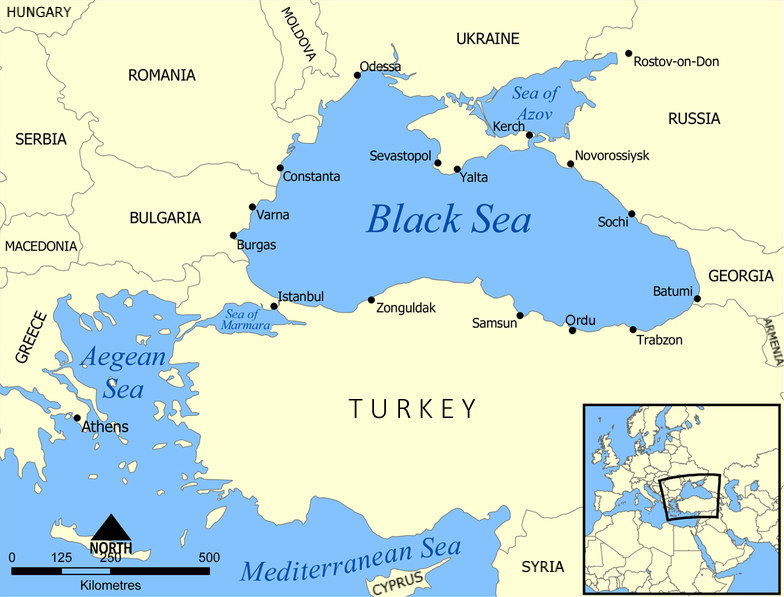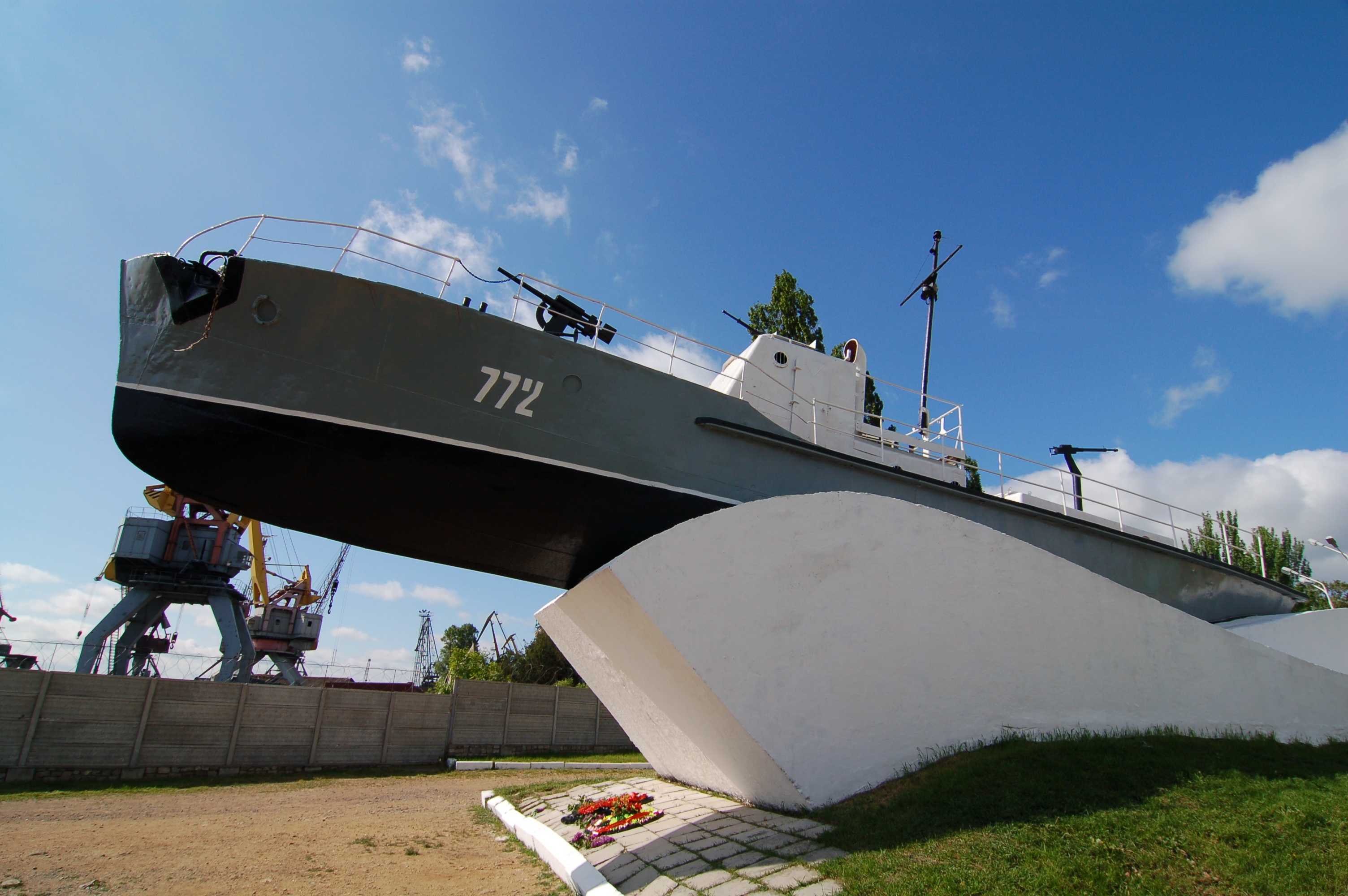Azov Flotilla on:
[Wikipedia]
[Google]
[Amazon]
 The Azov Flotilla or Azov Naval Flotilla was the name given to several Russian naval forces operated on the
The Azov Flotilla or Azov Naval Flotilla was the name given to several Russian naval forces operated on the
 During
During
At that time the flotilla consisted of : *2 torpedo speedboats *15 armored boats *3 guard ships *8 minesweepers The Akhtarsk Combat Division was established as part of the flotilla, which included a battalion of marine infantry, an infantry battalion and four anti-aircraft batteries. The flotilla was also assigned 20 Neman R-10s, 12 Ilyushin Il-2s, a fighter squadron with seven Il-2s and a flight reconnaissance squadron with five Beriev MBR-2s. The flotilla supported various landing operations and participated in the liberation of Mariupol and the Taman Peninsula. During the Kerch–Eltigen Operation, ships of the flotilla landed troops of the 56th Army northeast of Kerch. In January 1944, three more tactical landings were made on the Crimean coast. From November 1943 to April 1944, the flotilla performed supply tasks for the Separate Coastal Army in the Kerch area. In the Battle of the Crimea, they transported troops to the Crimea and dropped landing forces on the flanks of the German enemy.''World War II Soviet Armed Forces (3): 1944–45'' In April 1944, the Danube Flotilla was formed from the Azov flotilla, which was disbanded.
 The Azov Flotilla or Azov Naval Flotilla was the name given to several Russian naval forces operated on the
The Azov Flotilla or Azov Naval Flotilla was the name given to several Russian naval forces operated on the Sea of Azov
The Sea of Azov is an inland Continental shelf#Shelf seas, shelf sea in Eastern Europe connected to the Black Sea by the narrow (about ) Strait of Kerch, and sometimes regarded as a northern extension of the Black Sea. The sea is bounded by Ru ...
- as part of the Imperial Russian Navy
The Imperial Russian Navy () operated as the navy of the Russian Tsardom and later the Russian Empire from 1696 to 1917. Formally established in 1696, it lasted until being dissolved in the wake of the February Revolution and the declaration of ...
, by both the Workers' and Peasants' Red Fleet and the White Russians during the Russian Civil War
The Russian Civil War () was a multi-party civil war in the former Russian Empire sparked by the 1917 overthrowing of the Russian Provisional Government in the October Revolution, as many factions vied to determine Russia's political future. I ...
of 1917 to 1923, and as part of the Soviet Navy
The Soviet Navy was the naval warfare Military, uniform service branch of the Soviet Armed Forces. Often referred to as the Red Fleet, the Soviet Navy made up a large part of the Soviet Union's strategic planning in the event of a conflict with t ...
during World War II
World War II or the Second World War (1 September 1939 – 2 September 1945) was a World war, global conflict between two coalitions: the Allies of World War II, Allies and the Axis powers. World War II by country, Nearly all of the wo ...
.
Russia's first Azov flotilla
The first Azov Flotilla or comprised Russia's first naval force. Built from 1695 to 1711 at the behest of Tsar Peter I, it started its existence inVoronezh
Voronezh ( ; , ) is a city and the administrative centre of Voronezh Oblast in southwestern Russia straddling the Voronezh River, located from where it flows into the Don River. The city sits on the Southeastern Railway, which connects wes ...
and first saw action in the Second Azov Campaign in 1696.
Russo-Turkish War
The flotilla was first formed in 1768 for the Russo-Turkish War (1768-1774) under the command of vice-admiral Alexei Senyavin. It was disbanded in 1783 and its ships handed over to theBlack Sea Fleet
The Black Sea Fleet () is the Naval fleet, fleet of the Russian Navy in the Black Sea, the Sea of Azov and the Mediterranean Sea. The Black Sea Fleet, along with other Russian ground and air forces on the Crimea, Crimean Peninsula, are subordin ...
.
Russian civil war
During theRussian Civil War
The Russian Civil War () was a multi-party civil war in the former Russian Empire sparked by the 1917 overthrowing of the Russian Provisional Government in the October Revolution, as many factions vied to determine Russia's political future. I ...
, the Bolsheviks formed the flotilla in April 1918 to fight the Germans and the White Guards. As early as the end of June, the flotilla was destroyed after the coastline of the Azov Sea was lost, and the crews were transferred to the Red Army. After Denikin's defeat in March 1920, the Red Army recaptured the coast of the Sea of Azov, and the flotilla was formed again under the command of S.E. Markelov and based at Mariupol
Mariupol is a city in Donetsk Oblast, Ukraine. It is situated on the northern coast (Pryazovia) of the Sea of Azov, at the mouth of the Kalmius, Kalmius River. Prior to the Russian invasion of Ukraine, it was the tenth-largest city in the coun ...
. All ships that were in the ports of the Sea of Azov were included in the fleet. Barges and tugs were converted into warships. From September to November the base of theflotilla was relocated to Taganrog
Taganrog (, ) is a port city in Rostov Oblast, Russia, on the north shore of Taganrog Bay in the Sea of Azov, several kilometers west of the mouth of the Don (river), Don River. It is in the Black Sea region. Population:
Located at the site of a ...
and after a short time back to Mariupol.
In July 1920 the flotilla included:
*3 mine layers
*7 gunboats
*6 frigates
*5 speed boats
*7 floating batteries
A division of 4,600 men was deployed for landing operations. The tasks of the flotilla were, for example, fire support for the troops or the creation of mine barriers in the Kerch Strait. She also played an important role in defeating General Wrangel's forces. In April 1921 the flotilla was disbanded and crews and ships were taken over by the Black Sea Fleet
The Black Sea Fleet () is the Naval fleet, fleet of the Russian Navy in the Black Sea, the Sea of Azov and the Mediterranean Sea. The Black Sea Fleet, along with other Russian ground and air forces on the Crimea, Crimean Peninsula, are subordin ...
.
In November 1920, Commander Mikhail Frunze
Mikhail Vasilyevich Frunze (; ; 2 February 1885 – 31 October 1925) was a Soviet revolutionary, politician, army officer and military theory, military theorist.
Born to a Bessarabian father and a Russian mother in Russian Turkestan, Frunze at ...
took Crimea, pushing White general Pyotr Wrangel and his troops out of Russia. Frunze considered using the Azov flotilla to aid him, but the ships were stuck in Taganrog Bay by an early frost and took no part in the final campaign.
World War II
 During
During World War II
World War II or the Second World War (1 September 1939 – 2 September 1945) was a World war, global conflict between two coalitions: the Allies of World War II, Allies and the Axis powers. World War II by country, Nearly all of the wo ...
, the Flotilla fought against German and Romanian forces as they advanced along the coast. After being chased away from its base at Yeysk by Romanian Cavalry on 8 August 1942, the Flotilla regrouped at Temryuk. In late August, as Romanian forces seized the ports of Anapa
Anapa (, , ) is a types of inhabited localities in Russia, town in Krasnodar Krai, Russia, located on the northern coast of the Black Sea near the Sea of Azov. As of the 2021 Russian census, it had a population of 81,863. It is one of the largest ...
and Temryuk, most of the Flotilla was scuttled at Temryuk on 23 August, including its main warships: three gunboats (''Bug'', ''Don'' and ''Dniester''), each displacing 840 tons and armed with two 130 mm guns.
The Flotilla was re-established on 3 February 1943, and the headquarters of the flotilla became Yeisk.At that time the flotilla consisted of : *2 torpedo speedboats *15 armored boats *3 guard ships *8 minesweepers The Akhtarsk Combat Division was established as part of the flotilla, which included a battalion of marine infantry, an infantry battalion and four anti-aircraft batteries. The flotilla was also assigned 20 Neman R-10s, 12 Ilyushin Il-2s, a fighter squadron with seven Il-2s and a flight reconnaissance squadron with five Beriev MBR-2s. The flotilla supported various landing operations and participated in the liberation of Mariupol and the Taman Peninsula. During the Kerch–Eltigen Operation, ships of the flotilla landed troops of the 56th Army northeast of Kerch. In January 1944, three more tactical landings were made on the Crimean coast. From November 1943 to April 1944, the flotilla performed supply tasks for the Separate Coastal Army in the Kerch area. In the Battle of the Crimea, they transported troops to the Crimea and dropped landing forces on the flanks of the German enemy.''World War II Soviet Armed Forces (3): 1944–45'' In April 1944, the Danube Flotilla was formed from the Azov flotilla, which was disbanded.
Flotilla Commanders
Russo-Turkish War
* Vice Admiral Alexei Senyavin (1768–1774)Russian Civil War
* I.I. Gernstein (April – June 1918) * S.E. Markelov (March – April 1920) * E.S. Gernet (April – August 1920) * S.A. Chwitzki (September – November 1920) * B.L. Dandre (December 1920 – April 1921)German-Soviet War
*Captain at sea
Captain is the name most often given in English-speaking navies to the rank corresponding to command of the largest ships. The rank is equal to the army rank of colonel and air force rank of group captain.
Equivalent ranks worldwide include ...
Alexander Petrovich Alexandrov (July – October 1941)
* Rear Admiral
Rear admiral is a flag officer rank used by English-speaking navies. In most European navies, the equivalent rank is called counter admiral.
Rear admiral is usually immediately senior to commodore and immediately below vice admiral. It is ...
Sergey Gorshkov
Sergey Georgyevich Gorshkov (; 26 February 1910 – 13 May 1988) was an admiral of the fleet of the Soviet Union. Twice awarded the title Hero of the Soviet Union, he oversaw the expansion of the Soviet Navy into a global force during the Cold ...
(October 1941 – October 1942)
* Rear Admiral
Rear admiral is a flag officer rank used by English-speaking navies. In most European navies, the equivalent rank is called counter admiral.
Rear admiral is usually immediately senior to commodore and immediately below vice admiral. It is ...
Sergey Gorshkov
Sergey Georgyevich Gorshkov (; 26 February 1910 – 13 May 1988) was an admiral of the fleet of the Soviet Union. Twice awarded the title Hero of the Soviet Union, he oversaw the expansion of the Soviet Navy into a global force during the Cold ...
(February 1943 – January 1944)
* Rear Admiral Georgy Kholostyakov (January – February 1944)
* Rear Admiral
Rear admiral is a flag officer rank used by English-speaking navies. In most European navies, the equivalent rank is called counter admiral.
Rear admiral is usually immediately senior to commodore and immediately below vice admiral. It is ...
Sergey Gorshkov
Sergey Georgyevich Gorshkov (; 26 February 1910 – 13 May 1988) was an admiral of the fleet of the Soviet Union. Twice awarded the title Hero of the Soviet Union, he oversaw the expansion of the Soviet Navy into a global force during the Cold ...
(February 1944 – April 1944)
See also
* Azov-Black Sea FlotillaReferences
{{Authority control Sea of Azov Imperial Russian Navy Military units and formations of White Russia (Russian Civil War) Naval units and formations of the Soviet Union